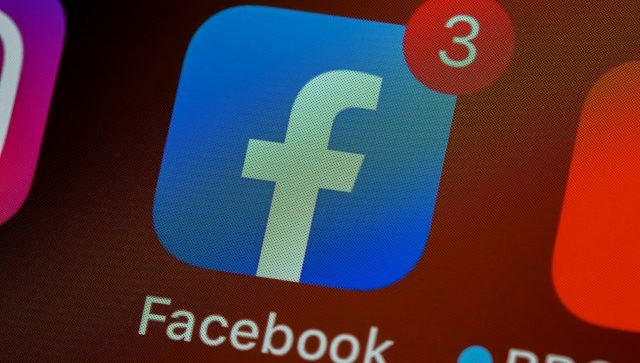In Part 1, I went through Meta’s business model. Which I boiled down to 4 people networks and 2 audience-builder platforms. That’s a simplification but describes most of its global engine.
Let’s now go through what matters in terms of digital strategy going forward. These are the concepts and factors that I keep an eye on for Meta. They are:
- People networks for connection and communication.
- Audience-builder platforms in text, jpeg and especially video.
- External data streams and limited ecosystems.
- Profit vs. engagement products.
- Hierarchies of control.
- Substitutes. These can be for consumers, content creators, merchants / brands, and (to a small degree) developers.
Concepts 1-2: People Networks and Audience-Builder Platforms
I discussed both of these in Part 1. And there is a lot on these in my Moats and Marathons books (and in the Concept Library).
When it comes to building digital businesses, networks are the best assets. I put them into three buckets:
- Physical Networks
- Protocol Networks
- People Networks
Sometimes you can build platform business models with these assets. It depends how big they are as platform business models usually require significant size. But we can also see them in smaller and more limited ways. These are often limited networks associated with traditional linear business models.
Physical networks are easier to visualize. Think railroads and pipelines. We can think about trucks and planes going on routes between cities.

Protocol networks connect computers. Like the TCP/IP protocol. Or like Verisign and its protocols for identity verification. Which I recently wrote about.

And people networks are about connecting people. And people with companies and institutions. Which are basically groups of people. People networks are easy to see. Think local churches. And villages.

But when networks become digital, it can get confusing. Phone lines began as physical networks. You put up telephone poles and lay wires. But the services they provided (communication) were digital in nature. And they became the backbone for tones of other networks using the wire. At that point, it’s about the people being connected.
That’s what Facebook was. It was the digitization of a people network. The people you knew in your social circle. Hence, social network. And you can build various services and even platform business models on this network asset. That’s how we go from Facebook to Meta.
So, Facebook built and acquired multiple people networks, which they used to offer connection and communication services. That’s Facebook messenger, Instagram messenger, WhatsApp, and Messenger.
And then they added two platform business models on top, which are both audience builders. Specifically, the Facebook Newsfeed and Instagram.
Finally, you want to pay attention to the three user groups involved in these platforms. They are:
- Consumers of content
- Creators of content
- Businesses and brands that do advertising
- Developers (in theory). But not much going on here.
In Part 1, I described this business with these pictures.



Ok. Those are the first two concepts (networks and platforms). I went through this, but I find it really helpful to map it out.
Concept 3: External data streams and limited ecosystems
“Ecosystems” is a fuzzy concept.
It’s about an extended connectivity and interoperability with other companies and products. Most businesses interact with 10-15 companies, typically in their supply chain and distribution network. And it’s done person-to-person with some contracts and phone calls. Think automakers coordinating with their supply chain in the design and manufacturing of new models. We don’t usually call this an ecosystem.
But digital businesses are really good at connectivity and inter-operability. They can connect with thousands and millions of companies and parties. They can interact in milli-seconds by digital connections. Platform business models are the most well-known type of ecosystem. These business models are in the business of enabling interactions.
But the most common type of digital ecosystem are the limited ecosystems we see in production and consumer engagement. These are called production and consumption ecosystems (which I have written about).
I usually put ecosystems into one of 9 types – based on the degree of connectivity and inter-operability. It’s a spectrum. You can also make a distinction between web2 and web3 ecosystem models.
Business models common in Web2:
- Linear business models (i.e., pipelines. Not ecosystems.)
- Production Ecosystems
- Consumption Ecosystems
- Company Ecosystems
- Platforms
- Pipeline plus Platform Business Model
Business models common in Web3 and Web1. These are usually about protocol networks.
- Protocol networks (i.e., blockchains) as stand-alone businesses
- Platform-protocol hybrids
- Protocol ecosystems (i.e., building blocks)
I plot them on the spectrum going from linear business models (limited connectivity) to 100% interaction-based business models.

As mentioned, Production Ecosystems are very common and very important. Manufacturers like Geely might digitize its production and create digital connections internally and with all its suppliers. They begin to inter-operate in real-time. This usually begins with data sharing between parties.
A company like John Deere might digitize its relationship with its customers. And with complementary products. It can then coordinate on the consumption side. This also begins with data sharing.
This is what comes to mind when I go through the Meta risk section on data sharing. In fact, management makes lots of comments about their need for data access and sharing from external parties. Meta’s limited ecosystem is mostly about data sharing with external parties in production and consumption.
Why is this so important?
Because Meta’s entire revenue model is dependent on their tools for targeting and measuring consumer behavior. These tools for targeting and measurement are what enables them to create and sell relevant and effective advertisements. And all this depends on data both from within their products and from external parties.
Think about how Facebook tracks you all over the web. Not just in their products. Think about how they try to get you to sign into other services using your Facebook account. Think about how they work with developers (somewhat) to get their products integrated into other apps.
This is all about a limited ecosystem based on data sharing. And their revenue is very dependent on this.
This is why the 2021 decision by Apple to limit data access within iOS was such a big hit to Facebook. Apple’s App Tracking Transparency feature significantly reduced their targeting capabilities by limiting advertiser accessing to iPhone user identifiers.
A CNBC article in February 2022 proclaimed “Facebook says Apple iOS privacy change will result in $10 billion revenue hit this year”. From that article:
- “Facebook’s admission is the most concrete data point so far on the impact to the advertising industry from Apple’s privacy change introduced last year.”
- “The privacy feature disrupts the behind-the-scenes mechanics of many mobile ads, especially those that confirm whether a purchase or download was made”
Ok. One more concept and that will be it for today.
Concept 4: Margin vs. Engagement Products
I talk about this all the time. Certain products can make you money. Other products get you engagement. Some products you measure by gross margin. Others by DAU. And it’s rare to have one product that does everything. So, you really want a product portfolio approach.
Customer attention is incredibly valuable. Companies like Meta and Tencent have built global empires by commanding eyeballs staring at screens. Within the attention / engagement businesses, communication networks is pretty much the front of the cue. Communication is the #1 most frequently used service by everyone. After that, payment networks and video also get tremendous engagement.
However, most companies are not going to have this. Most businesses are not in the attention and engagement game. Businesses selling socks, detergent and soda never used to talk about DAU and MAU. Even big CPG brands like Coca-Cola traditionally have had very little contact with consumers. They mostly deal with retailers.
Here’s the problem.
Businesses are all becoming digital. And digital businesses run on data. Every level of my Digital Operating Basics requires data. It is the fuel for operations, product improvements, smart management decisions, etc. And that means you need engagement. Virtually every company is trying to do this now.
All companies need engagement or partnerships to get the data that runs their increasingly digital business.
That’s how I think about margin vs. engagement products.
Fortunately, Facebook has both.
- Their communications products (WhatsApp, Instagram Messenger, FB Messenger, and Messenger) get unbelievable amounts of engagement. +3B users globally, with 75% using it every day. And Meta (mostly) does not monetize these.
- Their two big, margin products are Instagram and Facebook Newsfeed. Almost entirely on smartphones. And most of the money is coming from US and EU, where the ARPP is much higher. Now they are so big that they can make money in lots of place. But those appear to be the biggest ones.
One issue Meta deals with here is what happens when user engagement shifts between their various products. Meta launched Reels (short video) to compete with TikTok. And this has been successful in terms of engagement. But (it appears) this is far less profitable for them. And it is shifting user time and engagement from margin products to engagement. How to balance the portfolio is an interesting question. Although longer-term, Reels should be a cash machine for them, just like it is for TikTok.
***
Ok. that was a bit of theory. I’ll post the final part 3 tomorrow.
Cheers, jeff
———–
Related articles:
- A Breakdown of the Verisign Business Model (2 of 2) (Tech Strategy – Daily Article)
- 3 Factors Will Determine the Future of Verisign Inc. (Tech Strategy – Podcast 191)
- A Strategy Breakdown of Arm Holdings (1 of 3) (Tech Strategy – Daily Article)
From the Concept Library, concepts for this article are:
- Audience Builder Platform
- People Networks: Communications
- Margin vs. Engagement Products
- Limited Ecosystems
- Data Ecosystems
From the Company Library, companies for this article are:
- Facebook / Meta
Photo by Brett Jordan on Unsplash
Photos by GenAI
———
I write, speak and consult about how to win (and not lose) in digital strategy and transformation.
I am the founder of TechMoat Consulting, a boutique consulting firm that helps retailers, brands, and technology companies exploit digital change to grow faster, innovate better and build digital moats. Get in touch here.
My book series Moats and Marathons is one-of-a-kind framework for building and measuring competitive advantages in digital businesses.
This content (articles, podcasts, website info) is not investment, legal or tax advice. The information and opinions from me and any guests may be incorrect. The numbers and information may be wrong. The views expressed may no longer be relevant or accurate. This is not investment advice. Investing is risky. Do your own research.
